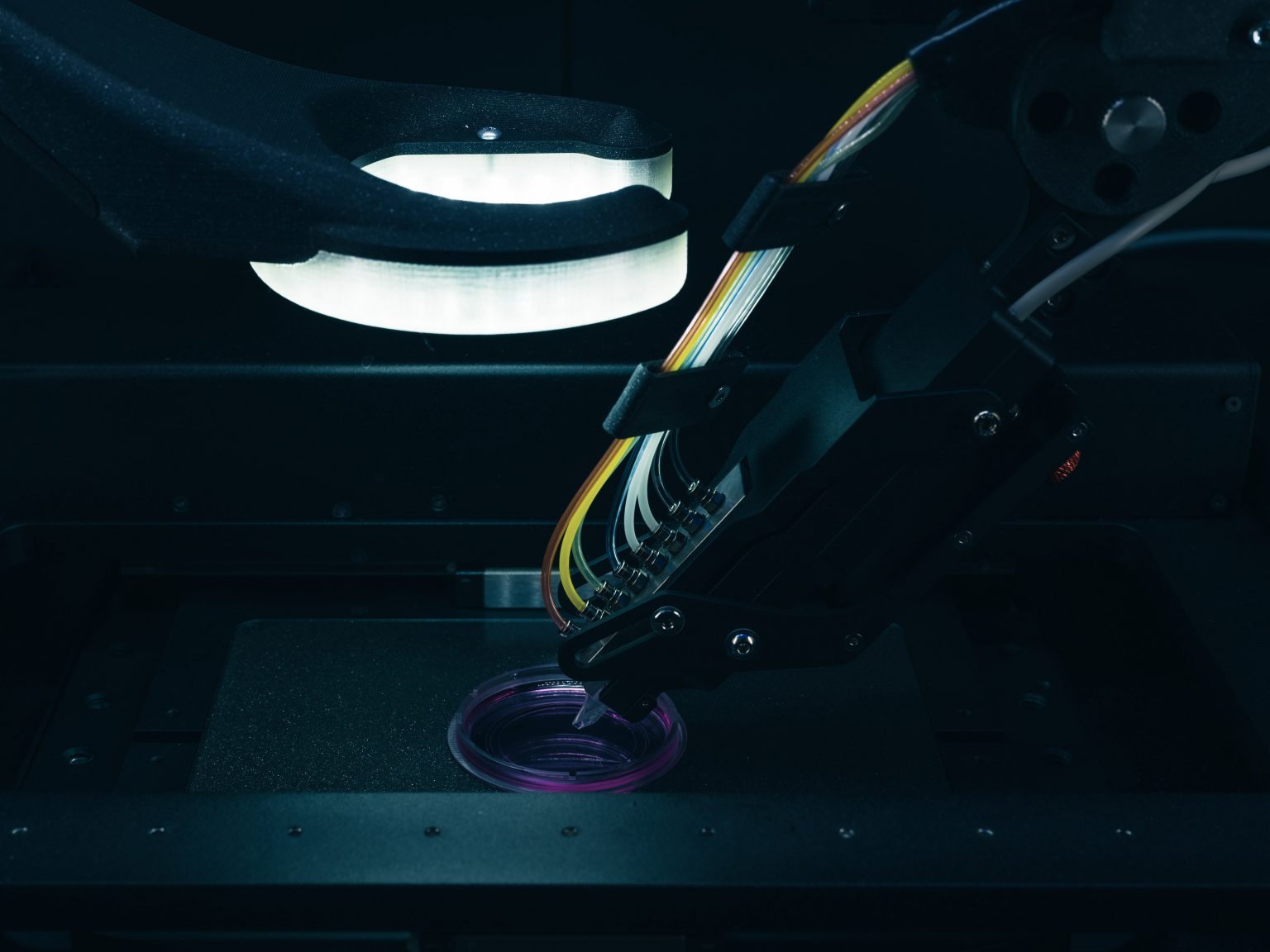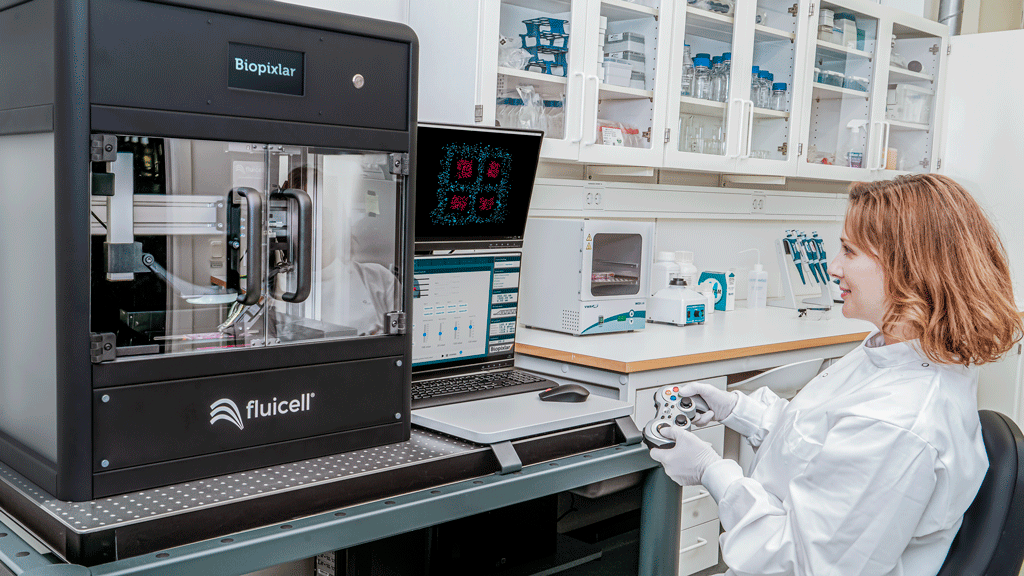As Swedish bioprinter manufacturer Fluicell prepares to enter the regenerative medicine market through its BioRej Advance program, it focuses on developing therapeutic products based on bioprinted transplantable microtissues targeting important diseases that lack adequate treatment. For example, in the past months, Fluicell’s internal research team has been focusing on providing viable solutions for type 1 diabetes, a disease that currently has no cure and is only managed through the control of blood glucose with a combination of insulin therapy, diet, and exercise. Aiming to change the traditional treatment of this autoimmune disorder that affects at least 2.5 million people worldwide, the company has reported progress in the early development of a medicinal product to treat it.
Using the company’s flagship Biopixlar high-resolution 3D bioprinting technology, a research team led by Fluicell Chief Scientific Officer (CSO) Tatsiana Lobovkina has succeeded in creating transferrable biocomposites that mimic the insulin-producing function of the pancreas. If the treatment is successful in the future, it will help patients with type 1 diabetes whose body’s own immune system doesn’t allow the pancreas to produce insulin (a hormone needed to allow glucose to enter cells and produce energy).
The company claims it has observed insulin release from its bioprinted biocomposites as a function of glucose stimulation, a crucial indicator of tissue functionality and a prerequisite for developing a future therapy against the disorder, which is usually diagnosed before the age of 40. Fluicell believes that these results provide important technological and biomedical evidence that its advanced therapy medicinal products could work.

Fluicell makes progress in the early development of advanced therapy medicinal products for diabetes based on Biopixlar. Image courtesy of Fluicell.
“We have obtained very promising results in our development of insulin-producing biocomposites that harness Biopixlar’s strength to create detailed biological tissues with programmable function and I want to thank the entire R&D team for their great work,” commented Lobovkina. “With Biopixlar, we can choose one or more cell types, including insulin-producing beta cells, and have control over their location and the histology of the resulting tissue. This is of crucial importance when it comes to both the function and longevity of the transplantable biomomposite. We see great potential in creating new tissue-based products for the treatment of diabetes as we move forward in the development work.”
Planning to develop its biocomposites towards a preclinical phase in the future, in the short term, the team intends to present the results of its extensive research and development work at international scientific meetings and publications.
Since the introduction of its Biopixlar bioprinting platform, Fluicell has been helping researchers around the globe to build biological tissues for drug development, disease understanding, and regenerative medicine research. Additionally, it enables the creation of detailed in vitro organs and tissue models with increased biological relevance, leading the way towards better experimental research models within the life science sector.
Based on innovative open-volume microfluidics technology, Biopixlar can generate detailed, multi-cellular biological tissues without the need for a gel matrix. The startup has already produced multi-cellular liver models, printed primary neurons with high precision to study neurodegenerative diseases and other cell and tissue types.
Moreover, since the company’s goal is to advance therapy medicinal products for several other diseases and conditions, Fluicell is currently conducting exploratory development work of transplantable biocomposites targeting heart failure (caused by tissue damage) as well as eye diseases from age-related macular degeneration.
During the first half of 2021, Fluicell announced several important advancements across multiple healthcare areas, not just type 1 diabetes. Among them, the launch of the Biozone 6 versatile platform for single-cell pharmacology codeveloped by world-leading pharma innovators Roche; the sale of Biopixlar platforms to the National Institute of Diabetes and Digestive and Kidney Diseases – part of the U.S. Department of Health (NIH) – and three European research laboratories, followed by the initiation of the regenerative medicine research and development program BioRej Advance, which plans to tap the growing regenerative medicine market slated to reach $11.4 billion by 2025.
Furthermore, in a recent letter, Fluicell CEO Victoire Viannay suggests that 2021 will be the best year for the company in terms of income and revenue. Originally a spin-off out of the Chalmers University of Technology in Sweden, Fluicell has come a long way since its inception in 2012, even becoming a public company trading in the Nasdaq Nordic exchange under the ticker symbol “FLUI.” Since then, it has made significant efforts to penetrate the thriving U.S. market and is driving demand growth and revenue through the sale of its machines and from its partnerships, research services, and grants received. In fact, through its BioRej Advance program, Fluicell is actively seeking partners to join forces in developing the next generation of regenerative medicine therapeutics to advance human health, including type 1 diabetes.
Subscribe to Our Email Newsletter
Stay up-to-date on all the latest news from the 3D printing industry and receive information and offers from third party vendors.
You May Also Like
Precision at the Microscale: UK Researchers Advance Medical Devices with BMF’s 3D Printing Tech
University of Nottingham researchers are using Boston Micro Fabrication‘s (BMF) 3D printing technology to develop medical devices that improve compatibility with human tissue. Funded by a UK grant, this project...
3D Printing Webinar and Event Roundup: April 21, 2024
It’s another busy week of webinars and events, starting with Hannover Messe in Germany and continuing with Metalcasting Congress, Chinaplas, TechBlick’s Innovation Festival, and more. Stratasys continues its advanced training...
3D Printing Webinar and Event Roundup: March 17, 2024
It’s another busy week of webinars and events, including SALMED 2024 and AM Forum in Berlin. Stratasys continues its in-person training and is offering two webinars, ASTM is holding a...
3D Printed Micro Antenna is 15% Smaller and 6X Lighter
Horizon Microtechnologies has achieved success in creating a high-frequency D-Band horn antenna through micro 3D printing. However, this achievement did not rely solely on 3D printing; it involved a combination...































